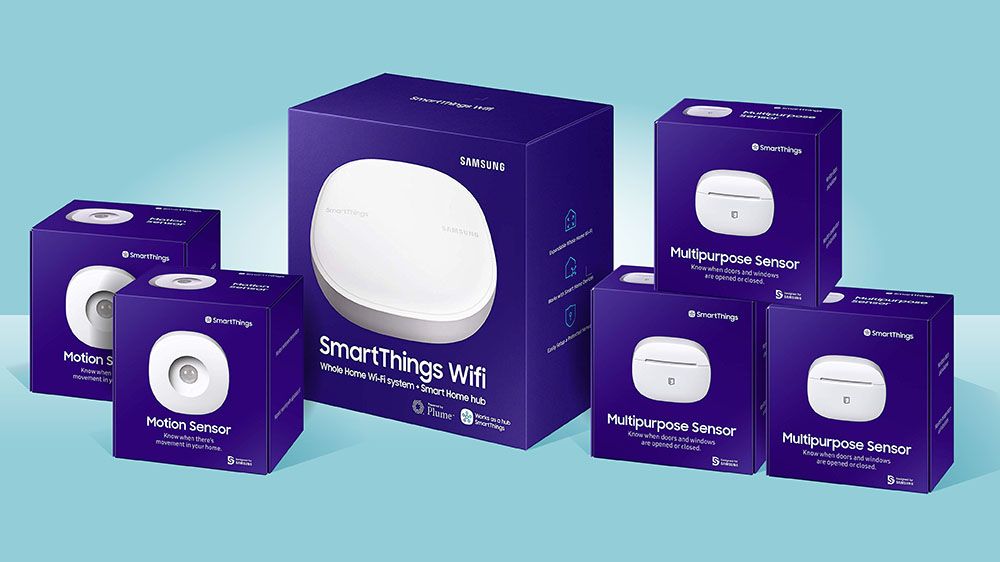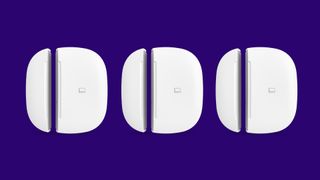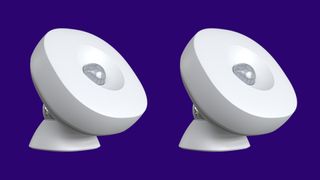
Sponsored by RACV
The idea of automating your home is attractive to many people, but the perception that it’s both complex and costly can understandably be off-putting. It’s common to regard smart home technology as the abode of the rich, who can afford expensive home installations, or super-geeky types, who can create and install everything themselves. But those days have passed. Smart home technology has reached a point where setting up your own home security and automation doesn’t take very long and can cost less than $400. So, where do you start?
The Royal Automotive Club of Victoria (RACV) may be best known for helping with automobiles in the Garden State, but its Home division is also a provider of Samsung SmartThings smart home technology. This includes the Smart Home Starter Kit, which costs just $299 and provides everything you need to get started. From the moment you open the box, everything is made simple for you – all components are individually packaged and labelled, and everything has its own quick start guide.
Simple to set up
The central device in the kit is a wireless SmartThings hub, which simply plugs into your existing router. This translates the signals transmitted from the SmartThings sensors into information that can be accessed via your existing home network and the internet. Everything is secured via 128-bit AES security, which means there’s no chance of it being hacked and compromised.
Once the hub is plugged in, you simply download the Samsung SmartThings app to your phone, which will then find the hub and walk you through the installation of the kit’s other components. This straightforward process involves taking them out of the box and scanning a QR code with the app. Adding them all can take less-than five minutes.
The Smart Home Starter Kit includes two multipurpose sensors, which affix to doors and windows to identify whether they’re open or closed and can also monitor temperature and vibration. The kit also provides three motion sensors, which quickly affix to sticky-backed, multi-directional magnetic bases that allow them to be pointed in a most directions. They’ll register any movement within three metres.

Low maintenance & easy to expand
All of the SmartThings devices operate using Zigbee and Z-Wave wireless technology, which has become standard in the smart home industry. The technology means that the sensors can communicate with their hub for over a year rather than the days and weeks that Wi-Fi and Bluetooth usually manage. Consequently, you won’t have to worry about the high-maintenance rigmarole of regularly changing batteries. It’s also worth noting that if your premises are large and the sensors are significantly spaced out, you can increase wireless coverage by simply adding additional SmartThings hubs.
Another benefit of the universal nature of the technology is that it works with devices made by other manufacturers, opening the door to all manner of sensor types by specialist device-makers. That includes add-ons like smoke alarms and moisture detectors (to guard against floods) and means you’re never locked into one, technology ecosystem.
One app controls it all
Once the phone app has helped you set up all the sensors, you can organise them into different rooms for easier management. From here, you can go about setting up your smart home– and SmartThings also keeps this simple.
The first thing to configure is the SmartThings Home Monitor, which comes preconfigured with the app. With this, you can easily set the device to be ‘armed’ (which has two modes for when you’re either home or away) or ‘disarmed.’ When armed and you’re at home, the app will notify you against home intrusions but won’t register your own inside activity. When set to ‘away’ mode, all movement and intrusions will be reported, while disarming the system turns notifications off. Recent updates to the app mean that quick-settings for fire, flood and carbon monoxide detection are also included. Notifications registered within your home only take a few seconds to appear on your phone, wherever you are.
You can enhance basic features with the app’s smart home automation features. These are simple, "if X then Y" settings, which transform what used to require complex coding into a simple two-step process: you simply select the trigger condition plus what you want to happen. This might simply involve automatically turning on a smart lightbulb if motion is detected, or it could sound a siren if you have a smart speaker connected. It can even activate mood lighting when your smartphone’s location settings automatically tell the system that you’re almost home or a certain time of night is reached. If you want to share the management and admin with another person, you easily can do so with a QR code or by simply adding their own Samsung account.

Low-cost professional setup
To make things even easier, if you live in Metropolitan Melbourne you can get all this without having to set anything up yourself – RACV’s installation service will take care of the installation for just $79.
Whatever your preference, the barriers to creating a smart home have all but vanished – and with the Smart Home Starter Kit from RACV, anyone can easily bring automation to their own home.

TechRadar was provided with a Smart Home Starter Kit for testing by RACV.
Get daily insight, inspiration and deals in your inbox
Sign up for breaking news, reviews, opinion, top tech deals, and more.
